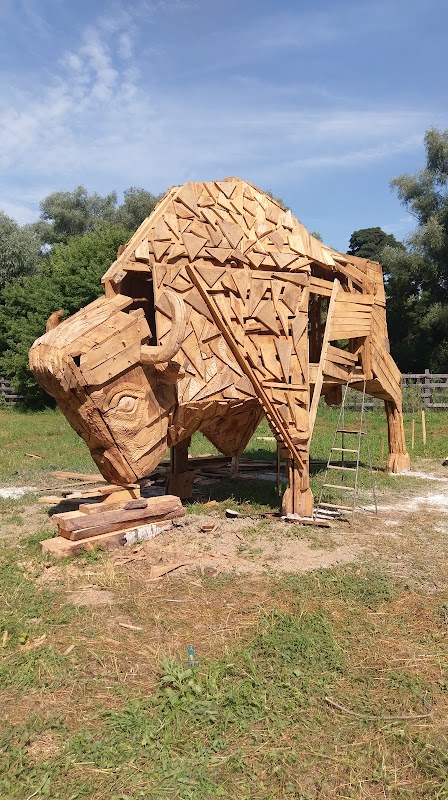Exploring the Uncharted Sculptures of Bechir Cave in Glodeni, Moldova
Bechir Cave in Glodeni offers a rare glimpse into nature’s underground sculptures, shaped over thousands of years into unpredictable formations. This accessible cave invites adventurous hikers to navigate forest trails and experience a cool, immersive subterranean world unlike any other in Moldova.
Bring reliable lighting
Natural light fades quickly inside the cave; a strong headlamp or flashlight is essential for safe exploration.
Wear sturdy, grippy footwear
The path and cave floor are often damp and uneven. Boots with solid tread and ankle support will prevent slips and injuries.
Stay hydrated and pace yourself
The moderate incline and humid environment can drain your energy quickly; bring enough water and rest during the hike.
Start early to avoid crowds
Early morning visits ensure a quieter experience and better light for both the hike and cave interiors.
Exploring the Uncharted Sculptures of Bechir Cave in Glodeni, Moldova
Making your way to Bechir Cave in Glodeni means stepping into an underground chamber where nature displays a raw, patient artistry carved over millennia. The cave’s formations are unlike any common stalactites or stalagmites: here, the stone twists and fans in complex shapes that seem almost deliberate, each formation fiercely guarding its primitive history. The path to Bechir Cave starts just outside Glodeni city, winding through uneven forest trails that challenge your footing but reward persistence with cool shade and distant bird calls. The hike itself covers roughly 4 kilometers roundtrip with a moderate elevation gain of 120 meters, cutting through mixed woods and patches of rocky outcrops.
Inside the cave, the air thickens—humid but steady—while the stone formations jut from walls and ceilings with unpredictable angles. Crystalline growths reflect any light source you carry, sparking a quiet atmosphere that dares you to explore further but reminds you to move carefully. The cave’s interior trails require a steady step; the floor can be slippery with moisture, so grip on boots is non-negotiable. While some sections feel tight, none demand advanced spelunking gear, making it accessible for casual explorers who respect the cave’s pace.
Timing your visit is crucial. Early mornings offer the clearest natural light for the outside hike and lessen the risk of crowding inside the cave, while afternoons may bring a subtle chill indoors as the cave breathes in cooler air. Bring a headlamp or strong flashlight—natural light only reaches so far—and pack water to stay hydrated; the hike’s incline and humidity can catch you off guard.
For those planning the trip, sturdy footwear with ankle support and solid tread is essential. A lightweight, long-sleeved shirt protects against the forest’s biting insects and cool cave draft. If visiting between April and early July, be ready for wet terrain and occasional rain showers. Autumn colors make the approach to the cave visually rewarding, while winter visits are feasible with appropriate gear, though the cave itself offers no warmth.
Bechir Cave is not just a destination; it’s an invitation to engage with geological forces that have crafted these shapes with deliberate patience. The formations command respect—they are fiercely themselves, defiant of human intervention, quietly imposing their history on those willing to step inside their domain. Prepare well, stay alert, and the experience will stay vivid in memory long after you emerge back into Moldova’s forest canopy.
Nearby Trips
All Adventures
Boat Charters
Water Activities
Adventures near Glodeni
Discover the unique and memorable adventures that make Glodeni special.
Frequently Asked Questions
Is any special spelunking gear required for Bechir Cave?
No advanced spelunking equipment is necessary. A sturdy headlamp or flashlight and good hiking boots suffice, as the cave passages are navigable without ropes or helmets.
Are there guided tours available for Bechir Cave?
Currently, Bechir Cave can be explored independently, but local guides from Glodeni town occasionally offer insight into the cave’s geology and history, enhancing the experience.
What wildlife might I encounter near Bechir Cave?
The surrounding forests are home to species such as woodpeckers, foxes, and occasional deer. Inside the cave, bat colonies are present but generally undisturbed by visitors.
Is the cave safe for children or inexperienced hikers?
While the cave itself is accessible, families should supervise children closely due to slippery floors and uneven terrain. Those with limited mobility may find the approach trail challenging.
How long is the hike to Bechir Cave and back?
The return trip is approximately 4 kilometers with a moderate incline, generally taking 2-3 hours total depending on pace and time spent inside the cave.
Can I visit the cave year-round?
Yes, but winter conditions can make the path icy and more difficult, requiring proper footwear and caution. Spring through fall offers the most comfortable conditions.
Recommended Gear
Headlamp or strong flashlight
Illuminates the dark cave interior, essential for safely exploring tight and poorly lit sections.
Hiking boots with ankle support
Provides grip on slippery and uneven surfaces both on the trail and inside the cave.
Lightweight long-sleeved shirt
Protects against insects and cold drafts inside the cave while allowing breathability in warmer seasons.
Water bottle
Staying hydrated ensures sustained energy levels throughout the hike and cave exploration.
Local Insights
Hidden Gems
- "A small natural spring near the cave’s entrance provides fresh water and a peaceful resting spot."
- "A lesser-known rock formation inside the cave resembles a cascading waterfall frozen in stone."
Wildlife
- "Watch for the rare Lesser Horseshoe Bat inhabiting darker recesses of the cave."
- "Forest trails often bring sightings of Eurasian jay and European green woodpecker."
History
"Bechir Cave features in local folklore as a sacred shelter for ancient inhabitants, with archaeological evidence of early human use in the region."

